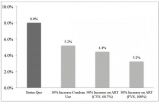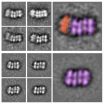(Press-News.org) Removing a child's tonsils is one of the most common surgeries performed in the United States, with approximately 500,000 children undergoing the procedure each year. New research finds that children from lower-income families are more likely to have complications following the surgery.
In the first study of its kind to analyze post-operative complications requiring a doctor's visit within the first 14 days after tonsillectomy, researchers saw a significant disparity based on income status, race and ethnicity.
"Surprisingly, despite all children having a relatively uniform health status before surgery, we found significant differences in the numbers of children requiring revisits after their tonsillectomies," said co-author Dr. Nina Shapiro, director of pediatric otolaryngology at Mattel Children's Hospital UCLA and a professor of head and neck surgery at the David Geffen School of Medicine at UCLA.
To conduct the study, Shapiro and Dr. Neil Bhattacharyya, professor of otolaryngology at Harvard Medical School, examined the complication rate in close to 80,000 children who had tonsillectomy surgeries in an outpatient setting (with or without an adenoidectomy) in four states — California, Iowa, Florida and New York. They reviewed ambulatory surgery databases from 2010 and 2011 and linked them to emergency room and inpatient databases. The revisit rates and diagnoses in the 14 days after tonsil removal surgery were analyzed with respect to gender, race and median household income level.
Among all cases reviewed in the study, approximately 8 percent of the children saw the doctor within two weeks following surgery for complications that included bleeding, pain and dehydration/fever.
However, they found that compared to those in the highest income group, children in the lowest income households had a one-and-a-half times greater likelihood of needing a doctor visit after surgery, and a one-and-one-third times greater likelihood of bleeding after surgery. They also found that black and Hispanic children were more likely to suffer from a complication than white children.
The importance of the research stands out if the rates of postoperative complications found in the study were applied to the 500,000 annual tonsillectomies performed in the United States. This would be equivalent to 3,000 additional children from lower-income families and beyond that 1,700 additional Hispanic children requiring a doctor's visit after their tonsillectomy compared to children from higher-income families and white children, Shapiro said.
The findings are published in the current online edition of Otolaryngology–Head and Neck Surgery, the official peer-reviewed publication of the American Academy of Otolaryngology–Head and Neck Surgery Foundation.
The authors believe several factors may have contributed to the disparities.
"One possibility is that families in the higher income group may have had easier access to communication with their doctor via phone or email, alleviating the need for doctor visits," Shapiro said. "Another possibility is that children in the lower income group may have had low-grade chronic illnesses or infections, making them more susceptible to postoperative problems. Or, educational level and possible language barriers may have played a role in postoperative outcomes."
Bhattacharyya noted that the data was taken from surgeries that took place before the implementation of the Affordable Care Act (ACA). "Since this type of surgery is so common, the next stage of this research will look at the impact of the ACA on post-surgical complications based on demographic variables," he said. "Furthermore, these data have important implications as the public gains access to more transparent data regarding surgical complications."
INFORMATION:
The study was not funded and the authors have no financial disclosures.
WORCESTER, MA – An international group of scientists led by Gang Han, PhD, at the University of Massachusetts Medical School, has combined a new type of nanoparticle with an FDA-approved photodynamic therapy to effectively kill deep-set cancer cells in vivo with minimal damage to surrounding tissue and fewer side effects than chemotherapy. This promising new treatment strategy could expand the current use of photodynamic therapies to access deep-set cancer tumors.
"We are very excited at the potential for clinical practice using our enhanced red-emission nanoparticles ...
Montréal, October 15, 2014 – An important scientific breakthrough by a team of IRCM researchers led by Michel Cayouette, PhD, is being published today by The Journal of Neuroscience. The Montréal scientists discovered that a protein found in the retina plays an essential role in the function and survival of light-sensing cells that are required for vision. These findings could have a significant impact on our understanding of retinal degenerative diseases that cause blindness.
The researchers studied a process called compartmentalization, which establishes ...
Do you believe in science? Your faith in science may actually make you more likely to trust information that appears scientific but really doesn't tell you much. According to a new Cornell Food and Brand Lab study, published in Public Understanding of Science, trivial elements such as graphs or formulas can lead consumers to believe products are more effective. "Anything that looks scientific can make information you read a lot more convincing," says the study's lead author Aner Tal, PhD, "The scientific halo of graphs, formulas, and other trivial elements that look scientific ...
During the 1930s, North America endured the Dust Bowl, a prolonged era of dryness that withered crops and dramatically altered where the population settled. Land-based precipitation records from the years leading up to the Dust Bowl are consistent with the telltale drying-out period associated with a persistent dry weather pattern, but they can't explain why the drought was so pronounced and long-lasting.
The mystery lies in the fact that land-based precipitation tells only part of the climate story. Building accurate computer reconstructions of historical global precipitation ...
Our mood can affect how we walk — slump-shouldered if we're sad, bouncing along if we're happy. Now researchers have shown it works the other way too — making people imitate a happy or sad way of walking actually affects their mood.
Subjects who were prompted to walk in a more depressed style, with less arm movement and their shoulders rolled forward, experienced worse moods than those who were induced to walk in a happier style, according to the study published in the Journal of Behavior Therapy and Experimental Psychiatry.
CIFAR Senior Fellow Nikolaus ...
Rochester, Minn. – The American Academy of Neurology (AAN) and the American Association of Neuromuscular & Electrodiagnostic Medicine (AANEM) offer a new guideline on how to determine what genetic tests may best diagnose a person's subtype of limb-girdle or distal muscular dystrophy. The guideline is published in the October 14, 2014, print issue of Neurology®, the medical journal of the AAN.
Researchers reviewed all of the available studies on the muscular dystrophy, a group of genetic diseases in which muscle fibers are unusually susceptible to damage, as ...
COLUMBIA, Mo. – According to the Centers for Disease Control and Prevention (CDC), many teens skip breakfast, which increases their likelihood of overeating and eventual weight gain. Statistics show that the number of adolescents struggling with obesity, which elevates the risk for chronic health problems, has quadrupled in the past three decades. Now, MU researchers have found that eating breakfast, particularly meals rich in protein, increases young adults' levels of a brain chemical associated with feelings of reward, which may reduce food cravings and overeating ...
PROVIDENCE, R.I. [Brown University] — To address the HIV epidemic in Mexico is to address it among men who have sex with men (MSM), because they account for a large percentage of the country's new infections, says Omar Galárraga, assistant professor of health services policy and practice in the Brown University School of Public Health.
A major source of the new infections is Mexico City's male-to-male sex trade, Galárraga has found. In his research, including detailed interviews and testing with hundreds of male sex workers on the city's streets and in ...
Coordinating product placement with advertising in the same television program can reduce audience loss over commercial breaks by 10%, according to a new study in the Articles in Advance section of Marketing Science, a journal of the Institute for Operations Research and the Management Sciences (INFORMS).
Synergy or Interference: The Effect of Product Placement on Commercial Break Audience Decline is by David A. Schweidel, Associate Professor of Marketing at Goizueta Business School, Emory University, Natasha Zhang Foutz, Assistant Professor of Marketing at McIntire School ...
UPTON, NY—The proteins that drive DNA replication—the force behind cellular growth and reproduction—are some of the most complex machines on Earth. The multistep replication process involves hundreds of atomic-scale moving parts that rapidly interact and transform. Mapping that dense molecular machinery is one of the most promising and challenging frontiers in medicine and biology.
Now, scientists have pinpointed crucial steps in the beginning of the replication process, including surprising structural details about the enzyme that "unzips" and splits ...


